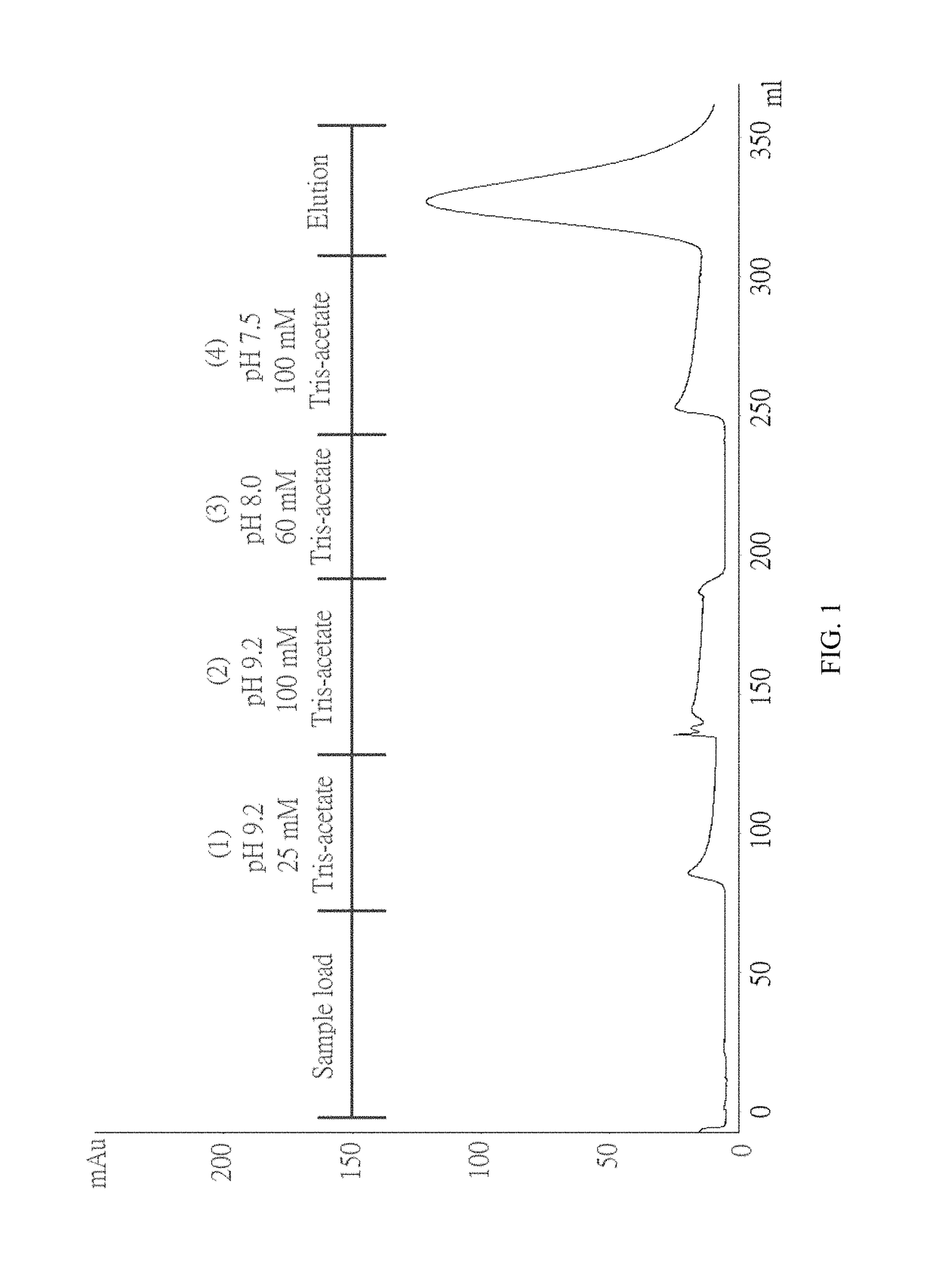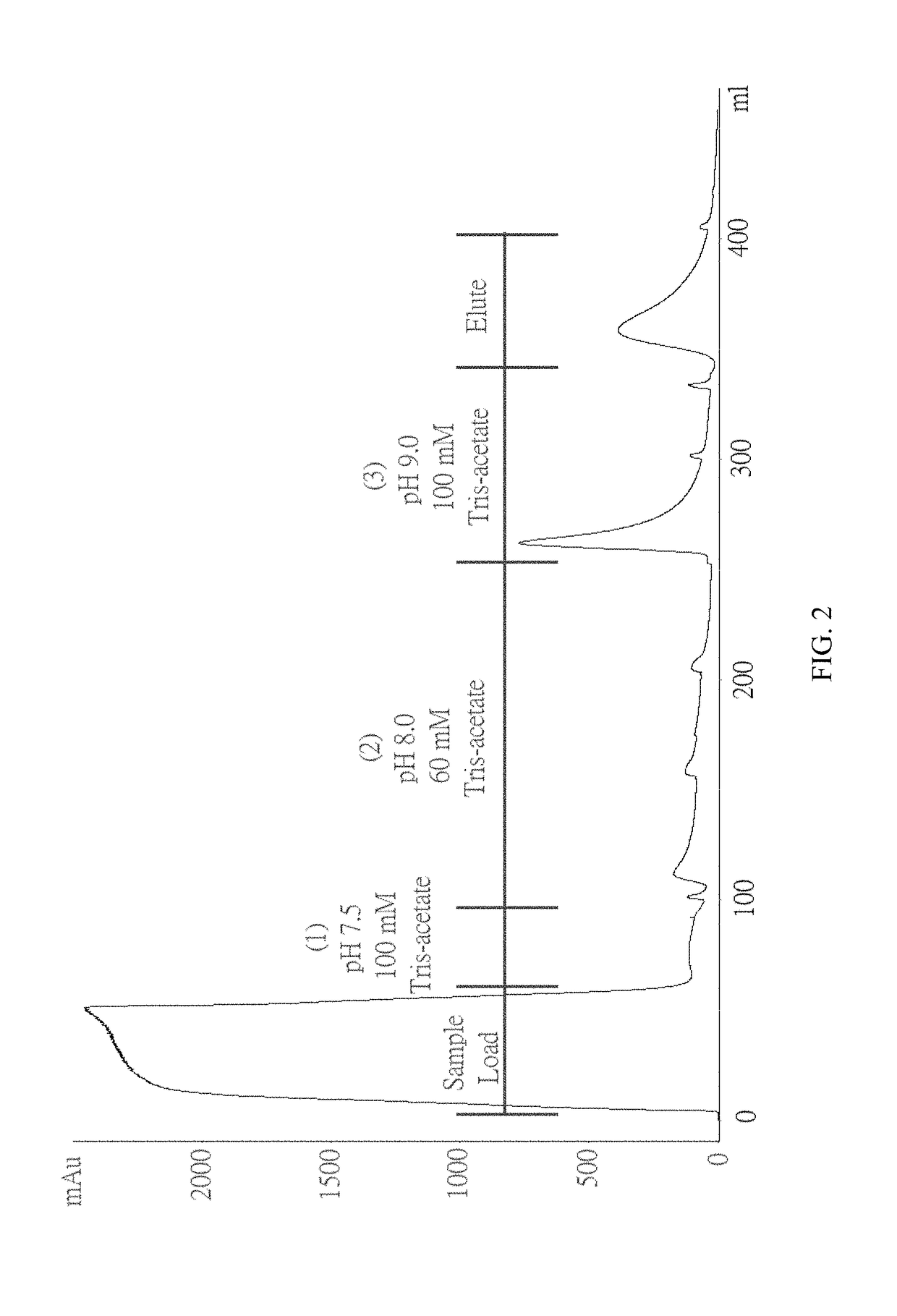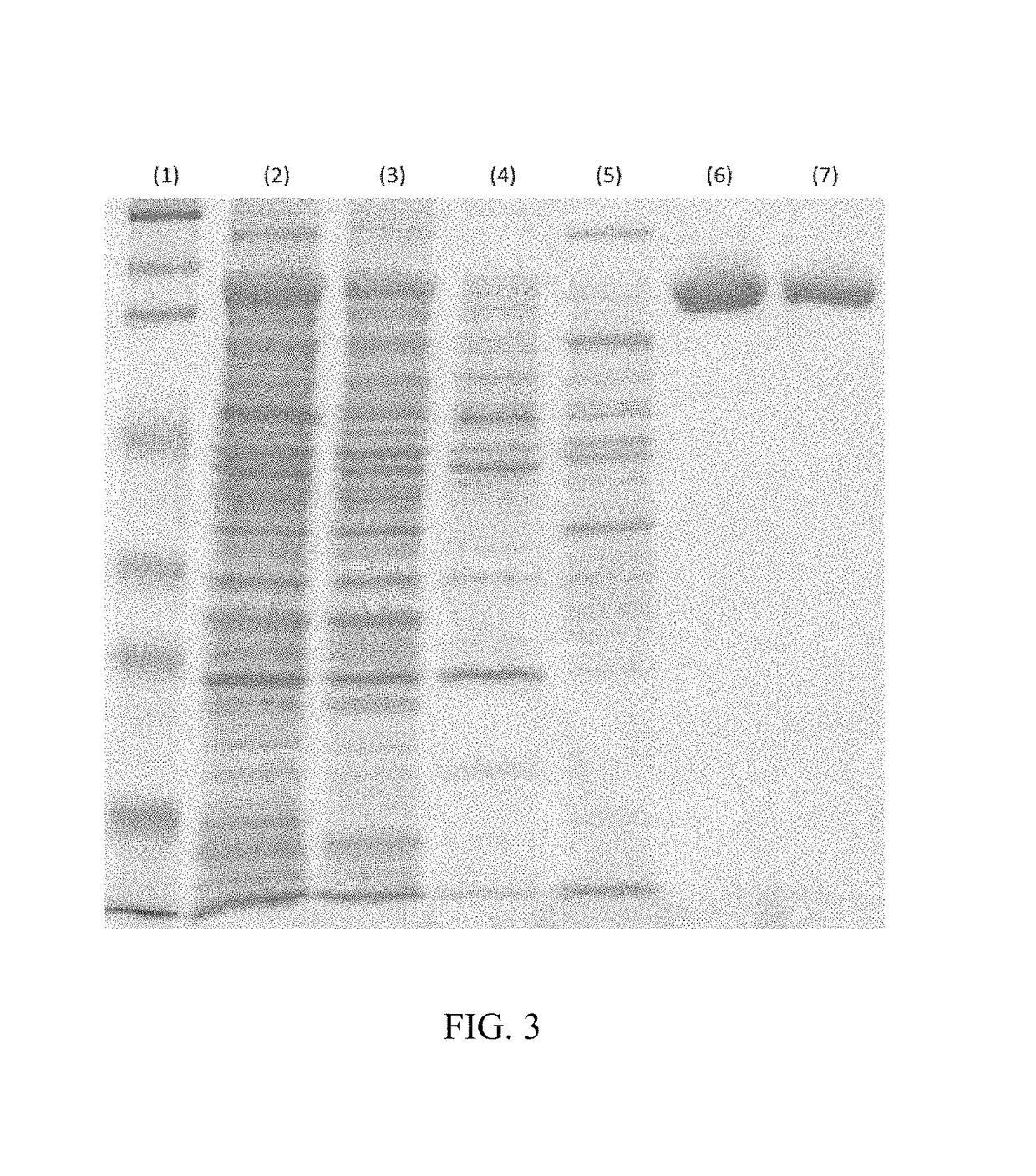Production of high purity chondroitinase ABC
a chondroitinase and abc technology, applied in the field of chondroitinase abc purification, can solve the problems of high overall cost, time-consuming and laborious, and affinity chromatography has not been used as a purification tool
- Summary
- Abstract
- Description
- Claims
- Application Information
AI Technical Summary
Benefits of technology
Problems solved by technology
Method used
Image
Examples
example 1
[0040]In the present invention, it is necessary to identify molecules that have a similar structure to the substrate of ChABC but are inert to enzymatic degradation. In order to test polysaccharides that could actually bind to the active site of ChABC, a relative enzyme inhibition assay was conducted on the selected polysaccharide:
[0041]490 μL of the substrate solution was incubated at 37° C. for at least 15 minutes containing 0.2% chondroitin sulfate C, 0.2% selected polysaccharide and 50 mM pH8 Tris HCl buffer. 10 μL of ChABC with activity of about 100 U / L was incubated at 37° C. for at least 3 minutes. After incubation, the two solutions were gently mixed. The mixture was then incubated at 37° C. for 20 minutes to perform enzymatic degradation of chondroitin sulfate. After 20 minutes, the reaction was terminated by inactivating ChABC by heating at 100° C. for 2 minutes. In addition to inactivating the mixture immediately without incubation for 20 minutes, a blank control was perf...
example 2
[0061]To test whether ChABC has a specific interaction with immobilized heparin, a column filled with heparin coupled via amide bonds to crosslinked agarose beads was used. The column was pre-equilibrated with 25 mM Tris-acetate (pH 7.3) before loading the sample onto the column. ChABC was dissolved in 25 mM Tris-acetate (pH 7.5) and loaded onto a column. (1) 25 mM Tris-acetate (pH 9.2), (2) 100 mM Tris-acetate (pH 9.2), (3) 60 mM Tris-acetate (pH 8) and (4) 100 mM Tris-Acetate (pH 7.5). None of these buffers elute ChABC from the column. And when the 0-0.3M NaCl linear gradient is applied, ChABC can be eluted from the column. The chromatogram is shown in FIG. 1.
example 3
[0062]Gene encoding ChABC (SEQ ID NO: 1) from P. vulgaris was cloned by conventional PCR from the genomic DNA of P. vulgaris. This PCR product contain the DNA sequence encoding ChABC (SEQ ID NO:1) was used as a template for the second round PCR during which it was decided to add the DNA sequence encoding MGSENLYFQ to the N-terminal of the ChABC, so that the DNA sequence encoding TEV protease-recognition-site contained ChABC (SEQ ID NO: 3) was generated. The PCR product was ligated via T4 DNA ligase to linearized pET3a to form a recombinant plasmid with the encoding sequence of native ChABC. The recombinant plasmid was then introduced into E. coli strain BLR (DE3) by electroporation. The transformed E. coli was plated on LB agar plate containing 50 μg / ml ampicillin to allow selection of colonies transformed with the plasmid. The selected single colony was inoculated into LB medium at 37° C. with 50 μg / ml ampicillin for 18 hours as a pre-culture and this pre-culture was transferred in...
PUM
| Property | Measurement | Unit |
|---|---|---|
| conductivity | aaaaa | aaaaa |
| pH | aaaaa | aaaaa |
| pH | aaaaa | aaaaa |
Abstract
Description
Claims
Application Information
 Login to View More
Login to View More - R&D
- Intellectual Property
- Life Sciences
- Materials
- Tech Scout
- Unparalleled Data Quality
- Higher Quality Content
- 60% Fewer Hallucinations
Browse by: Latest US Patents, China's latest patents, Technical Efficacy Thesaurus, Application Domain, Technology Topic, Popular Technical Reports.
© 2025 PatSnap. All rights reserved.Legal|Privacy policy|Modern Slavery Act Transparency Statement|Sitemap|About US| Contact US: help@patsnap.com



